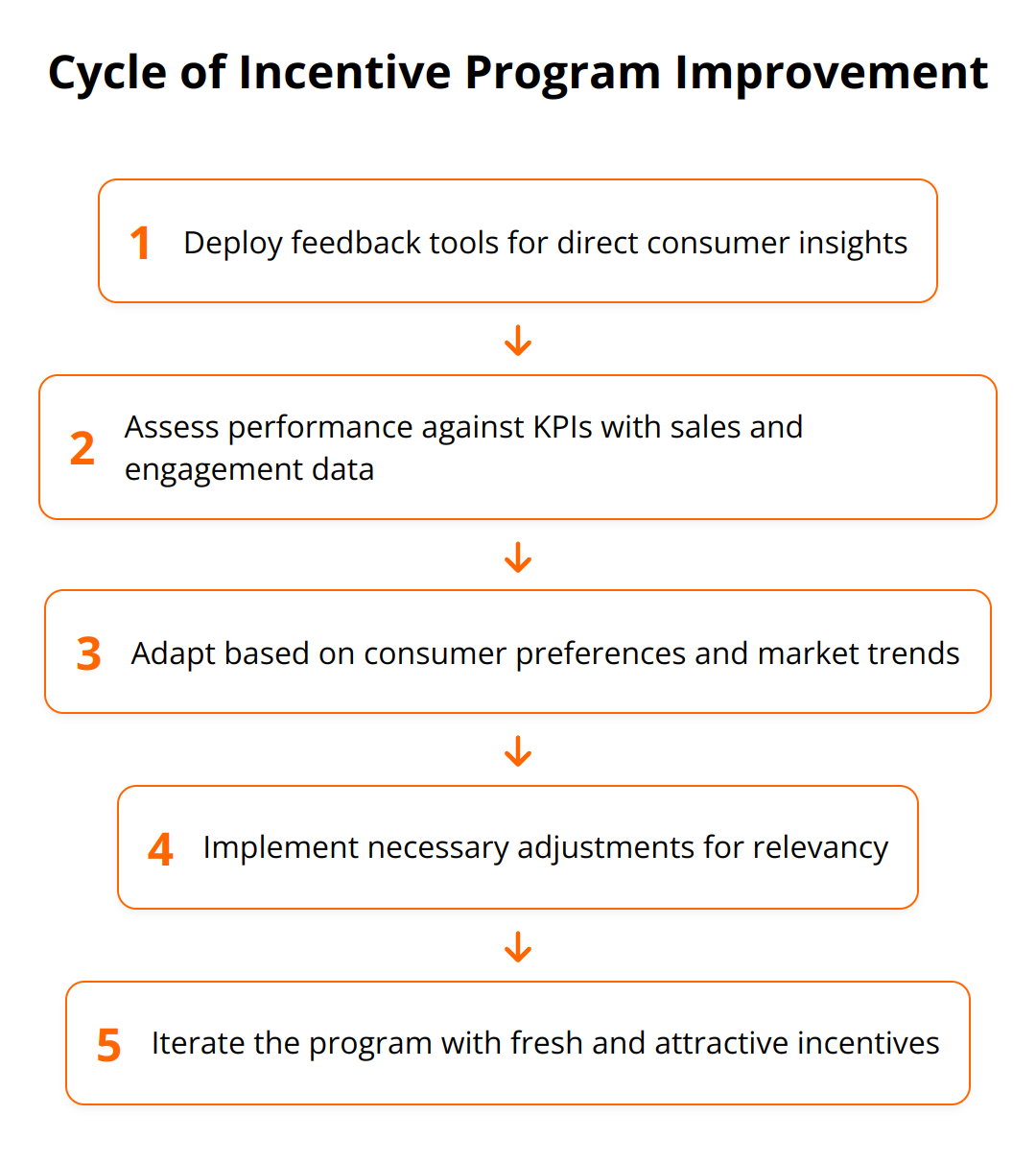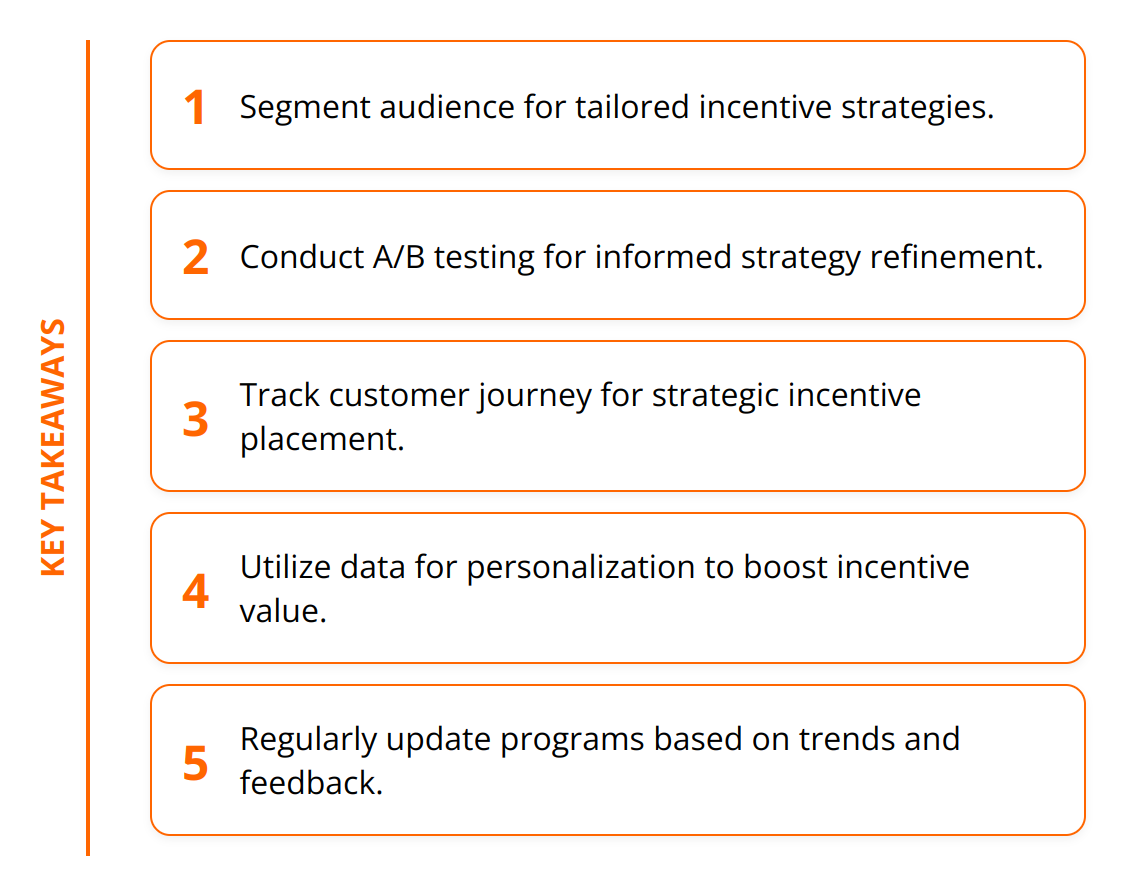
In the competitive landscape of consumer engagement, understanding and applying consumer incentive analytics stands as a transformative strategy for businesses. We at Reward the World are dedicated to helping you navigate this complex yet rewarding terrain. By dissecting the core aspects and practical implementations of these analytics, businesses can significantly enhance their consumer incentive programs. Let’s delve into how integrating smart analytics into your strategies can create more engaging, personalized, and effective incentives for your customers with Consumer Incentive Analytics: Practical Tips
Decoding Consumer Incentive Analytics
In today’s competitive market, the strategic use of consumer incentive analytics can make or break the effectiveness of your incentive programs. These analytics go beyond simple data collection, diving into the heart of what drives consumer behavior. By understanding the types of incentives that resonate most with your audience—be it financial rewards, emotional connections, or convenience-driven offers—you can tailor your strategies to meet their needs more effectively. However, without a solid grasp on the role of analytics, businesses might miss out on these critical insights.
First and foremost, consumer incentive analytics is about leveraging data to understand how, why, and when your customers respond to certain incentives. This involves a comprehensive look at purchasing behaviors, engagement levels, and the overall effectiveness of your current incentive strategies. The goal is to identify patterns that can inform more personalized and impactful approaches to consumer incentives.
There are three main types of incentives, each appealing to different aspects of consumer motivation:
- Financial incentives, such as discounts or loyalty points, target the universal desire to save money or earn rewards.
- Emotional incentives focus on creating a connection with the consumer, invoking feelings of belonging, achievement, or exclusivity.
- Convenience-driven incentives reduce friction in the purchasing process, making it easier for consumers to make a decision or take action.
Analytics play a pivotal role in refining these strategies by providing actionable insights into how each type of incentive performs across various consumer segments. For example, data might reveal that millennials are particularly responsive to emotional incentives tied to social causes, whereas Gen X consumers might prioritize financial benefits more.
To enhance your incentive strategies effectively, consider these practical tips:
- Segment your audience based on their responses to different types of incentives. This allows for more targeted and personalized approaches.
- Conduct A/B testing on different incentives to measure their impact and refine your strategy based on real-world data.
- Track the customer journey meticulously to understand where and how incentives can be most effectively placed for maximum engagement.
Furthermore, integrating personalization into your incentives not only responds to consumer preferences revealed through analytics but also significantly boosts the perceived value of those incentives. Utilizing data effectively means moving beyond generic offers and towards incentives that truly resonate with individual consumers.
It is also essential to remain agile in your strategy. Consumer preferences evolve, and so should your incentive programs. Regularly revisiting your analytics and adjusting your approach based on current trends and data will keep your incentives fresh and engaging.
By paying close attention to consumer incentive analytics, businesses can craft more compelling, relevant, and effective incentive strategies that not only attract but also retain customers. The key lies in understanding the intricate details provided by your analytics and using those insights to design incentives that align with your consumers’ desires and behaviors. For a deeper exploration of practical tips on utilizing analytics in your rewards programs, consider reading incentive program analytics tips.
In conclusion, the strategic application of consumer incentive analytics is not just about offering rewards; it’s about offering the right rewards in the right way. Embrace the data, and let it guide you towards creating incentive programs that drive engagement, loyalty, and ultimately, business success.

Implementing Analytics for Consumer Incentives
Effective consumer incentive analytics hinge on robust data collection, precise metric tracking, and cutting-edge technology utilization. Together, these elements form a solid foundation for any successful incentive program. Analyzing consumer reactions to incentives isn’t just about acknowledging their preferences but deeply understanding them to foster loyalty and increase engagement.
Data Collection: A Broad and Deep Approach
The first step to implementing effective analytics is gathering data. But not all data is created equal. The most valuable insights come from a blend of quantitative and qualitative data. Quantitative data might show that a particular incentive was redeemed 500 times last month, but qualitative data will tell you why customers found this incentive appealing or how it improved their perception of your brand.
Sources for data collection include:
- Customer surveys post-purchase or post-interaction
- Website analytics tracking user behaviors
- Social media engagement and feedback
- Sales data to correlate incentives with purchase behaviors
- Customer service interactions for direct feedback and sentiment analysis
One cannot overstate the importance of diversifying data sources. Each provides a unique lens through which customer behavior can be observed and understood.

Metrics: The Navigational Stars
After collecting data, the next step is identifying which metrics will guide your strategy. Not every metric will be relevant. Focus on those that directly relate to your incentive goals. Key metrics include:
- Redemption rates for financial incentives
- Engagement rates on social media for emotional incentives
- Conversion increases post-incentive introduction
- Customer lifetime value changes over time
- Net Promoter Score (NPS) to gauge overall satisfaction and loyalty
Each metric offers insight into different aspects of the customer journey and the effectiveness of your incentives. Regular monitoring and analysis will highlight where adjustments are necessary.
Analytics Technologies: Your Best Allies
Technology plays a pivotal role in consumer incentive analytics. The right tools can automate data collection and analysis, providing real-time insights that would be impossible to gather manually. Modern CRM systems, advanced analytics platforms, and AI-driven predictive modeling tools are essential for dissecting large datasets to identify trends, patterns, and opportunities.
Utilizing technologies provides several advantages:
- Automated data collection from various sources
- Real-time analytics for timely decision-making
- Predictive modeling to forecast future trends
- Personalization engines to tailor incentives at an individual level
Investing in technology is non-negotiable for businesses serious about leveraging consumer incentive analytics to its full potential.
In summary, implementing effective analytics in consumer incentives programs demands a comprehensive approach to data collection, meticulous metric tracking, and leveraging advanced technologies. This backbone of analytics not only elevates the consumer experience but also drives tangible business outcomes. For businesses looking to boost the effectiveness of their incentive programs through analytics, exploring in-depth analytics can provide further insights and strategies.
Optimizing Incentive Programs
In the realm of consumer incentives, one size doesn’t fit all. A successful incentive program demands personalization, precise timing, and continuous feedback. Here’s a deeper insight into making your program not just functional but a powerful tool for driving engagement and loyalty.
Tailoring Offers Through Data Insights
Personalization is the cornerstone of impactful incentive programs. Leveraging data to customize offers not only enhances the user experience but significantly increases program participation rates. Recent studies suggest that personalized offers can boost sales by up to 10%.
To achieve personalization:
- Use customer data to segment your audience into distinct groups based on their purchasing behavior, preferences, and demographics.
- Design incentives that cater specifically to the interests and needs of these subgroups.
- Incorporate a mix of financial, emotional, and convenience-driven rewards to cater to a broader audience palette.

Timing and Presentation Matter
The impact of an incentive is heavily influenced by its timing and presentation. Launching a discount during a holiday season might see higher redemptions than at other times. Similarly, showcasing a premium offer in an attractive format can enhance its perceived value.
For optimal timing and presentation:
- Analyze purchase data to identify peak shopping periods for your audience, and align incentive launches accordingly.
- Test various presentation formats (email, pop-ups, app notifications) to determine which yield the highest engagement.
- Ensure clarity in the communication of the incentive’s value proposition to eliminate any confusion.
The Cycle of Improvement
The most successful incentive programs are those that evolve based on customer feedback and market trends. Regularly gather insights into what works and what doesn’t, making necessary adjustments to keep the program fresh and relevant.
Steps for continual improvement:
- Deploy surveys or feedback tools post-redemption to gather direct consumer insights on the incentive experience.
- Monitor sales and engagement data to assess the performance of each incentive against set KPIs.
- Stay informed on market trends to anticipate changes in consumer preferences, adapting your program to maintain its attractiveness.

Implementing these practices requires a blend of art and science. While data provides the raw insights needed for personalization, creativity in timing and presentation can significantly enhance the attractiveness of your incentives. Continuous feedback, on the other hand, acts as the compass guiding your program’s evolution and ensuring its long-term success.
Wrapping Up
Navigating the landscape of consumer incentives requires a keen understanding of analytics to tailor, execute, and continuously improve engagement strategies. At Reward the World, we emphasize the strategic integration of analytics to deepen customer relationships and enhance program effectiveness.

Key takeaways from our journey into consumer incentive analytics include the crucial role of personalized, well-timed incentives and the power of data to unlock insights into consumer behavior. By focusing on what truly motivates your audience—whether it’s saving money, feeling a sense of belonging, or enjoying the convenience—businesses can design incentive programs that resonate on a personal level.
Emphasizing personalization, timing, and feedback ensures that your incentives remain relevant and appealing. Leveraging these aspects effectively can lead to increased participation rates, higher customer satisfaction, and ultimately, stronger brand loyalty. Data plays a central role in this process, offering the insights needed to craft truly impactful incentives.
The importance of ongoing learning and adaptation cannot be overstated. Consumer preferences evolve, and staying abreast of these changes requires a commitment to continuous improvement and a willingness to adjust strategies based on feedback and market trends. This approach ensures that your incentive programs not only meet but exceed consumer expectations, fostering long-term engagement and loyalty.
We encourage businesses to harness the power of analytics to enhance consumer engagement, turning every customer interaction into an opportunity for growth. By doing so, brands can not only attract but also retain a loyal customer base, driving business success in today’s competitive marketplace. Dive deeper into analytics with our guide on in-depth analytics or explore how our global incentives platform can elevate your consumer engagement strategies at Reward the World.
Remember, in the dynamic world of consumer incentives, analytics is not just a tool—it’s a pathway to creating meaningful, lasting connections with your audience. Let’s use these insights to build stronger, more engaging incentive programs that stand out in the crowded market. Together, we can turn data into action, crafting experiences that reward, engage, and inspire with the help of our Consumer Incentive Analytics: Practical Tips
